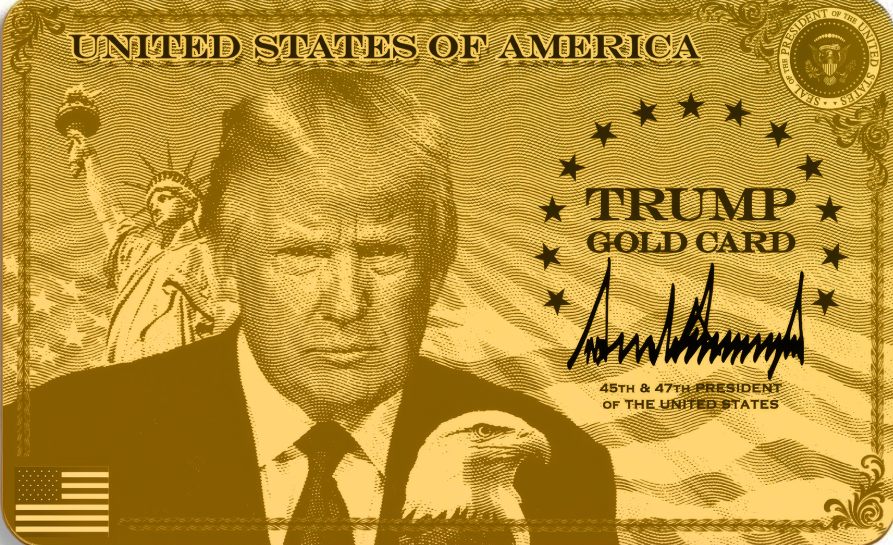What Is the Gold Card?
The Trump Gold Card is a newly created immigration pathway designed for high-net-worth individuals. Under the program, a foreign national can obtain U.S. permanent residency (commonly known as a green card) by making a non-refundable contribution of $1 million to the U.S. Department of Commerce.
If the applicant is sponsored by a company, the required contribution rises to $2 million. In return, applicants gain a streamlined route to lawful permanent residency — essentially bypassing much of the bureaucracy that typically comes with other visa types.
There’s even talk of a higher-tier option called the “Platinum Card,” requiring a contribution of around $5 million, which would come with special tax advantages and greater flexibility in how long the holder can stay in the U.S. each year.
Why This Program Exists
The official explanation is that the Gold Card aims to “realign immigration policy with national interests” by prioritizing immigrants who can bring significant economic value to the United States.
In simpler terms, the administration believes that attracting the wealthy will boost investment, create new business opportunities, and strengthen American industry — all while generating billions in revenue for the government.
This approach replaces older investor-visa models that required job creation or risky investments in private projects. Instead of investing in a business, Gold Card applicants contribute directly to the U.S. Treasury through the Department of Commerce.
How the Gold Card Works
Here’s how the process is expected to unfold:
Application: Interested individuals submit an application through the official government portal.
Vetting: Each applicant goes through national security and background checks.
Contribution: Once approved, the applicant makes an unrestricted $1 million (or $2 million corporate) contribution to the U.S. Department of Commerce.
Confirmation: The funds are placed in a special federal account dedicated to commerce and industry.
Residency Granted: After verification, the applicant receives a fast-tracked green card under existing employment-based visa categories.
The contribution is considered a “gift,” not an investment — meaning it’s non-refundable and does not require job creation or business risk.
How It Differs from Previous Programs
Before the Gold Card, the main path for wealthy immigrants was the EB-5 Immigrant Investor Program, which required a minimum $800,000 investment in a U.S. business that created at least 10 jobs.
The Gold Card removes those conditions entirely. There’s no need to create jobs, choose a specific region, or manage a project. The money goes straight to the U.S. government, which makes the process far simpler but also far more controversial.
Another key difference is the tax treatment. The proposed Platinum tier could allow recipients to spend up to 270 days per year in the U.S. without being taxed on foreign income — something no previous visa program has offered.
Benefits and Opportunities
Supporters of the Gold Card say it’s a smart way to attract global wealth and high-value individuals who can contribute to the American economy. Potential advantages include:
A major new revenue stream for the federal government.
Easier and faster residency options for investors and entrepreneurs.
New opportunities for companies to sponsor elite employees under the corporate version.
Potential to make the U.S. a global magnet for wealthy business leaders seeking stability and prestige.
